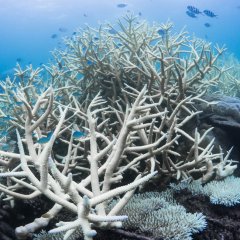Advanced water literacy education. Start exploring the ProBleu catalog of teaching aids and resource bundles on topics such as seabeds: classification and food webs; citizen science and freshwater; aquatic ecosystems; science from space; and freshwater resources. Member of UNESCO-IOC Blue Thread Network.
World Ocean Curriculum - Ocean and Climate

Ocean School is a free environmental education resource for students in grades 5-12. Inspiring and immersive multimedia resources featuring linear and 360˚ videos, VR/AR, interactive media and hands-on projects and activities are offered in English and French. Cross-curricular content spans science, social studies, language arts and more.
Supported by NASA through the TOPEX/Poseidon Education Project, this site has educational information and classroom activities on oceans & climate, El Niño, ice ages, fisheries, waves, icebergs and currents.
Carbon Emissions, the Ocean Carbon Cycle, Polar Melt, Ocean Currents, Extreme Weather, Ocean Acidification: this free 19-page resource packet was developed by World Ocean Observatory for our subscription-based service of audio-visual material. Here you will find information and links to online resouces on the aforementioned topics. This is a companion piece to our original and curated programming for our first module Ocean Climate but serves as a stand-alone resource, too.
Building ocean, coastal, and climate literacy for students and educators, this site is full of lessons, stories, and activities sure to keep your students' attention.
This site provides upper-level, in-depth content for a variety of meteorology topics and includes a multimedia database and multi-lingual modules. Lesson plans are available for middle and high school level.
A collection of information and classroom activities covering: oceans, human impact, weather, satellite imagery, remote sensing, Antarctica, global climate change, lobsters, turtles, freshwater issues, and more.
Educational wall charts, graphics and maps available for environmental and earth science educators. Topics include impacts of climate change, animals affected by climate and at risk of extinction, global ecology, fresh water, pollution, and more.
EPA-developed guide will help students and educators with clear, accurate information about the causes and effects of climate change and the steps we can all take to help solve the problems. Site includes Lesson Plans, Tools and Tips for Educators, and Additional Web Resources.
Graphics and animations facilitate learning about El Niño. Teachers and students can access the latest El Niño forecasts and measurements which include global sea surface temperature, equatorial Pacific sea surface temperature, and tropical Pacific buoy data. These datasets can be used in the classroom for graphing and data analysis activities. Appropriate for students in grades 10 -12.
Developed by our friends at Our Childrens Trust, the Pathway to Climate Recovery presentation is designed for distribution to schools, educators, students, and other groups for use in support of deeper conversations about climate recovery and the remedy being requested in the 2018 Juliana v. U.S. lawsuit. Download a copy here.
Stanford University has developed a curriculum to get students thinking about climate and weather, their own connection to climate change, and the implications of climate change on the physical world. Plans include sea level rise, carbon dioxide emissions, ice core data, global action, local solutions, and mitigation strategies. This site provides introduction overviews for high school curriculum and middle school curriculum (pdf).
A reviewed collection of educational resources coupled with the tools to enable an online community to share and discuss teaching about climate and energy science. Learn how you can build your students’ understanding of the core ideas in climate and energy science.
Maine.gov curriculum module examines several key human connections to the ocean. Topics include activism/advocacy, climate change, ecosystems, nature, and social awareness. It will show students how to make a difference, how to understand the science and our relationship with the ocean, and ends with journaling and a community service art activity. For grades 9-12

